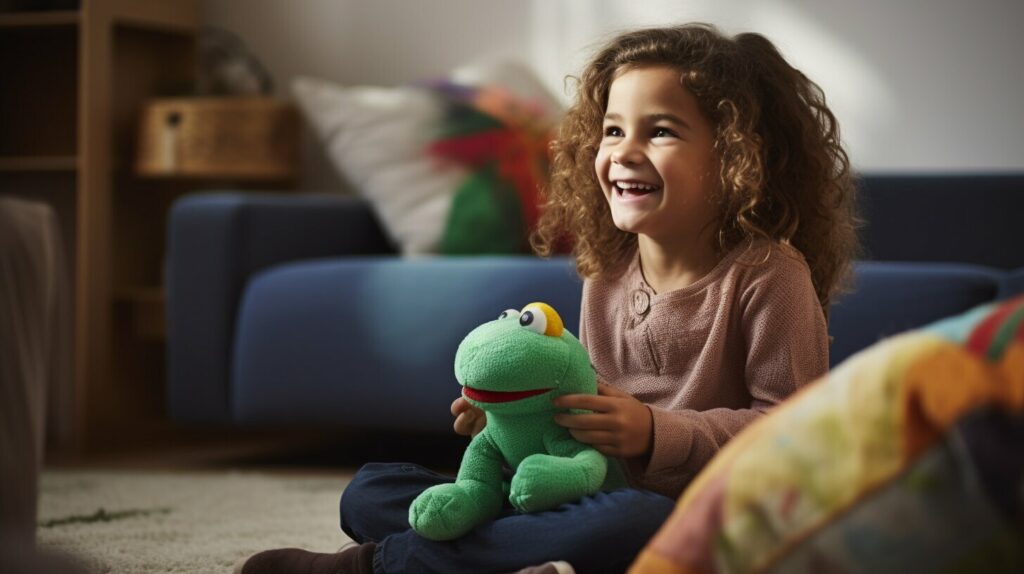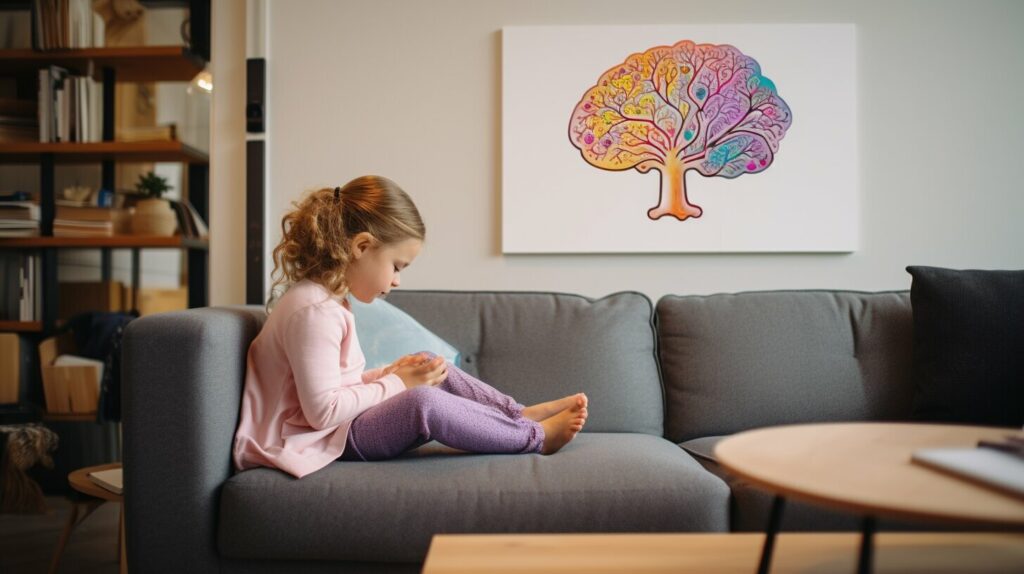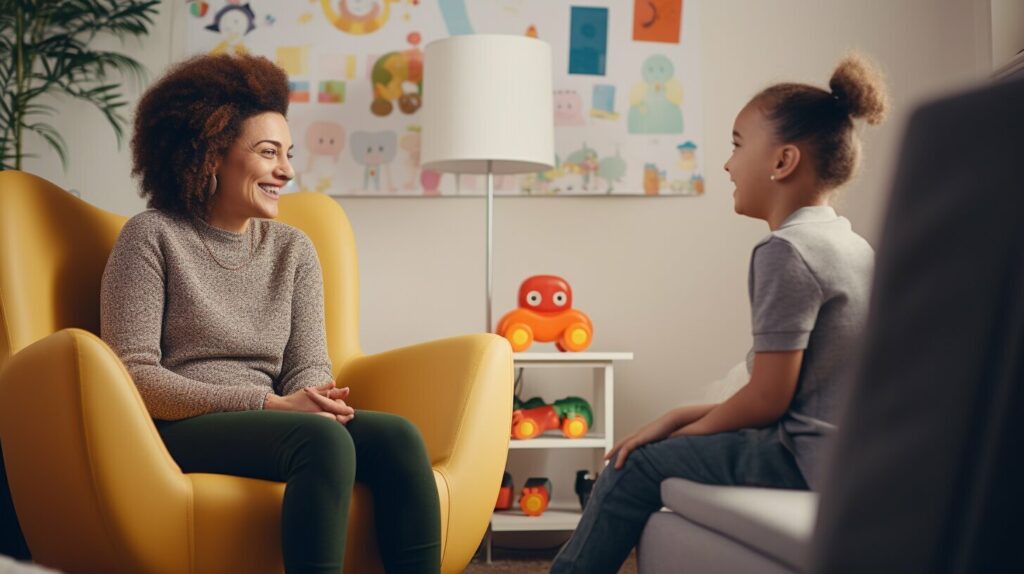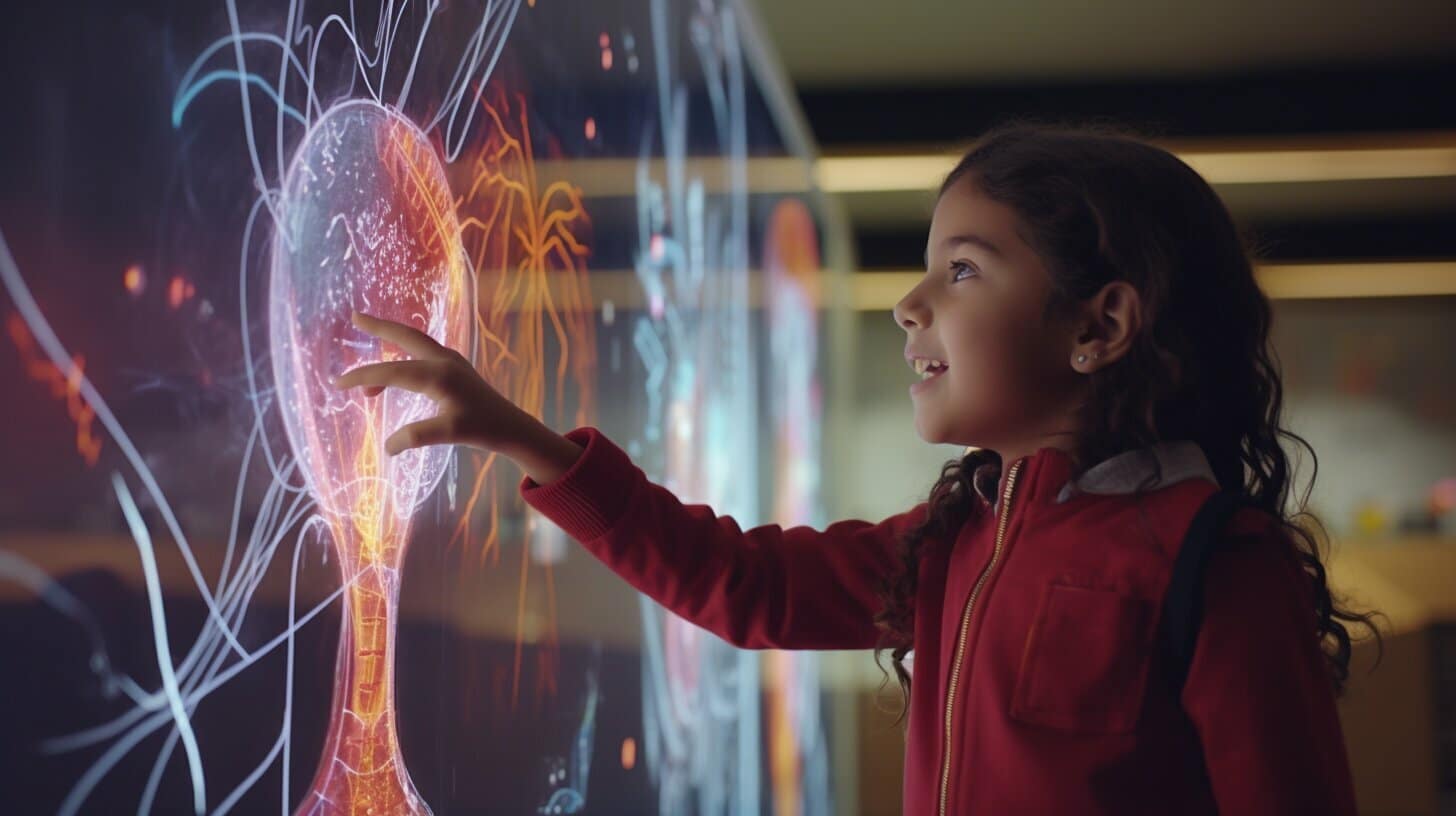As a parent or caregiver, you want to provide your child with the best possible care for their overall well-being. However, when it comes to explaining therapy to a child, you may feel unsure about how to approach the topic and communicate it in an age-appropriate way. Fortunately, there are effective tips that can help you explain therapy to your child without overwhelming them or causing unnecessary stress.
By discussing therapy with your child in a supportive and informative manner, you can help them better understand their emotions and gain valuable tools to navigate challenging situations. In this article, you will learn simple and effective tips for explaining therapy to a child, creating a safe and supportive environment, simplifying therapy concepts, addressing common concerns and misconceptions, encouraging open communication and emotional expression, involving the child in the therapy process, and emphasizing the supportive role of the therapist.
Key Takeaways:
- Explaining therapy to a child can provide numerous benefits for their overall well-being and mental health.
- Creating a safe and supportive environment and using age-appropriate language is crucial when discussing therapy with a child.
- Simplifying therapy concepts, addressing common concerns and misconceptions, and involving the child in the therapy process can help make therapy more understandable and approachable for children.
- Emphasizing the supportive role of the therapist and promoting open communication and emotional expression can help children gain a sense of control over their mental well-being.
Why It’s Important to Talk to Kids About Therapy
Explaining mental health treatment to children is important for their overall well-being. Talking to kids about therapy can help them better understand their emotions and navigate challenging situations. Age-appropriate explanations can make children feel more comfortable and less anxious about the process of therapy.
Children may feel scared or confused when they first hear about therapy, but providing them with the right information can put them at ease.
It is crucial to talk to children about therapy in a supportive and non-judgmental manner. This can help reduce any stigma surrounding mental health treatment and encourage children to seek help if they need it.
Not discussing therapy with children can have negative consequences. They may feel isolated or misunderstood, which can lead to more serious mental health issues in the future. It is important to open up the conversation about therapy early on so that children feel comfortable seeking help when they need it.

Seeking therapy is a positive and proactive step towards improving mental health, and talking to kids about it can help them understand and embrace this important journey.
Creating a Safe and Supportive Environment
When explaining therapy to a child, it is important to create a safe and supportive environment that helps them feel at ease. Here are some tips:
| TIP | DESCRIPTION |
|---|---|
| Choose the right time | Make sure the child is not distracted or upset, and choose a time when you can have a private conversation without interruptions. |
| Use age-appropriate language | Use words and phrases that the child can easily understand. Avoid using technical jargon or talking down to them. |
| Encourage questions | Let the child know that it is okay to ask questions, and answer them honestly and openly. |
| Offer comfort | Reassure the child that they can share their emotions and that therapy is a safe place to do so. |
Remember, the goal is to create an environment where the child feels comfortable sharing their thoughts and emotions. By doing so, you can help them feel more at ease with the idea of therapy, and make the process more effective.

Simplifying Therapy Concepts for Children
Explaining therapy to a child can be challenging, especially when it comes to complex concepts. However, breaking down these ideas into simpler terms can help children better understand the therapy process and feel more comfortable with the experience.
Avoid using technical jargon or abstract language that may confuse a child. Instead, use concrete examples and visuals to help them grasp the concepts. For example, you can use an analogy like going to the doctor when you feel sick to explain how therapy can help them feel better emotionally.
Another effective strategy is to use metaphors or symbolism to help illustrate abstract concepts. For example, you can compare emotions to a weather forecast, where some days are sunny while others are cloudy or stormy. This can help children understand that emotions are natural and can change over time.

Finally, try to put therapy concepts in language that is specific to the child’s age and developmental level. For younger children, use simple language and short explanations. For older children, you can provide more detailed explanations and encourage them to ask questions.
Remember, the goal is to make the therapy experience not only understandable but also enjoyable for children. By simplifying therapy concepts, you can help children feel more comfortable and engaged in the therapy process.
Addressing Common Concerns and Misconceptions
It’s normal for children to have concerns or misconceptions about therapy. They may feel nervous about meeting a new person or worry that therapy will be scary or painful. It’s important to address these concerns and provide age-appropriate explanations to help children feel more comfortable and confident about the therapy process.
Therapy is a safe and supportive space where you can talk about your thoughts and feelings. The therapist is here to help you understand your emotions and find ways to feel better.”
You can reassure your child that therapy is not a punishment or a sign of weakness. Instead, therapy is a proactive way to address emotional challenges and build resilience. Encourage your child to ask questions and express any concerns they may have. This can help them feel more in control and engaged in the therapy process.
Some children may also have misconceptions about what happens in therapy sessions. They may think that the therapist will tell them what to do or that they will be forced to talk about things they don’t want to discuss. You can explain that therapy is a collaborative process where the child and therapist work together to set goals and make progress.
It may also be helpful to remind your child that what they discuss in therapy is confidential, meaning that the therapist won’t share their thoughts or feelings with anyone else without permission, unless they are worried about the child’s safety. This can help children feel more comfortable opening up and sharing their thoughts and feelings with the therapist.

Remember, the most important thing is to listen to your child’s concerns and provide honest and supportive explanations. By addressing common concerns and misconceptions, you can help your child feel more comfortable and confident about seeking therapy and taking steps towards better mental health.
Encouraging Open Communication and Emotional Expression
One of the primary goals of therapy is to help children communicate their emotions in a safe and supportive environment. By encouraging open communication and emotional expression, therapy can provide a space for children to explore their thoughts and feelings without fear of judgment or criticism.
It’s important to let your child know that it’s okay to talk about their emotions, even if they’re difficult to express. Reinforce the idea that their thoughts and feelings are valid and important, and that therapy can help them work through any challenges they may be facing.
During therapy sessions, your child may be introduced to different communication techniques to help them express their emotions more effectively. These may include journaling, drawing, or playing games that encourage self-expression and reflection.
Therapists may also use storytelling to help children understand and process their emotions. For example, a therapist may tell a story about a character who is dealing with similar struggles, or use puppets or toys to act out different scenarios.

Remember, therapy is a process, and it may take time for your child to feel comfortable expressing themselves fully. Encourage them to be patient with themselves, and reinforce the idea that therapy is a safe and supportive space where they can explore their emotions without fear of judgment.
Involving the Child in the Therapy Process
When discussing therapy with your child, it’s important to emphasize their active role in the process. By involving them in treatment decisions and encouraging their participation, you can help them feel empowered and invested in their own mental health. Here are some tips on how to involve your child in the therapy process:
- Ask for their input: When choosing a therapist or deciding on treatment goals, ask your child for their opinion and preferences. This can help them feel more invested in the process and build trust with the therapist.
- Encourage their participation: During therapy sessions, encourage your child to ask questions, share their thoughts and feelings, and provide feedback on the therapy process. This can help them feel more comfortable and engaged in the therapy process.
- Set goals together: Work with your child and their therapist to set specific, measurable goals for therapy. This can help your child focus their efforts and feel a sense of accomplishment as they make progress towards their goals.
- Praise their efforts: Recognize and praise your child’s efforts in therapy, even if they haven’t achieved their goals yet. This can help build their confidence and encourage them to continue working towards positive change.
Remember, involving your child in the therapy process can help them feel more invested in their own mental health and build a stronger, more positive relationship with their therapist.

Emphasizing the Supportive Role of the Therapist
It’s important for children to understand that the therapist is there to provide guidance and support throughout the therapy journey. The therapist’s expertise, empathy, and commitment to helping children navigate their emotions and challenges are essential in creating a safe space for the child to express themselves.
Therapists are trained professionals who can help children develop coping skills, build self-esteem, and manage difficult emotions. They are there to listen and provide guidance, without judgment or criticism.
During therapy sessions, the therapist may use different techniques or strategies to help the child, such as play therapy, cognitive-behavioral therapy, or talk therapy. These approaches are tailored to the child’s individual needs and may change depending on the child’s progress throughout therapy.
Remember, therapy is a team effort between the child, the therapist, and the parent/caregiver. The therapist is there to work with the child and family collaboratively, to ensure the best possible outcome for the child’s mental health and well-being.

“The therapist is there to work with the child and family collaboratively, to ensure the best possible outcome for the child’s mental health and well-being.”
Conclusion
Explaining therapy to a child may seem daunting, but it’s an important part of supporting their mental health and well-being. Remember to create a safe and supportive environment, use age-appropriate language, and simplify complicated concepts. Address any concerns or misconceptions your child may have, and encourage open communication and emotional expression. Involving your child in the therapy process and emphasizing the supportive role of the therapist can also help make therapy more approachable.
By taking these steps, you can help your child better understand therapy and the important role it can play in their lives. With your support and guidance, your child can gain the tools they need to navigate their challenges and thrive.
What Is the Best Way to Explain Therapy for a Child with OCD?
When explaining ocd to a child, it is important to use simple language and provide age-appropriate examples. Emphasize that it is a common mental health condition and not their fault. Encourage open conversations, active listening, and remind them that therapy can provide helpful coping strategies and support for their thoughts and behaviors.
FAQ
Q: How do I explain therapy to my child?
A: Explaining therapy to a child can be done in a simple and effective way. It’s important to use age-appropriate language and provide concrete examples that they can relate to. Creating a safe and supportive environment and encouraging open communication are also key. For more tips, refer to the sections below.
Q: Why is it important to talk to kids about therapy?
A: Talking to kids about therapy is important because it helps them understand mental health treatment and its benefits. Age-appropriate explanations can help children better navigate their emotions and cope with challenging situations. It also creates a supportive environment where they feel comfortable asking questions and seeking help.
Q: How can I create a safe and supportive environment when explaining therapy to my child?
A: Creating a safe and supportive environment involves choosing an appropriate time and place for the conversation, using age-appropriate language, and ensuring your child feels comfortable asking questions. By creating a nurturing atmosphere, you can help your child feel more at ease when discussing therapy.
Q: How do I simplify therapy concepts for my child?
A: Simplifying therapy concepts for children involves breaking down complex ideas into simpler terms, using visuals or metaphors to explain abstract concepts, and providing concrete examples that children can relate to. By using age-appropriate language and strategies, you can help your child better understand therapy.
Q: How do I address common concerns and misconceptions about therapy?
A: Addressing common concerns and misconceptions involves providing age-appropriate explanations to alleviate fears and misconceptions. Assure your child that therapy is a positive and helpful process and encourage them to ask any questions they may have. By addressing their concerns, you can help them feel more comfortable with therapy.
Q: How can I encourage open communication and emotional expression with my child?
A: Encouraging open communication and emotional expression involves creating a safe and non-judgmental space for your child to share their thoughts and feelings. Let them know that therapy provides a safe space for them to express themselves and that their emotions are valid. Encourage them to share any concerns or questions they may have.
Q: How can I involve my child in the therapy process?
A: Involving your child in the therapy process can be empowering for them. Encourage their active participation by allowing them to express their preferences and goals in therapy. This can help build trust with the therapist and give them a sense of control over their own mental well-being.
Q: What is the supportive role of a therapist?
A: The therapist plays a supportive role by providing guidance and support throughout the therapy journey. They have expertise in helping children navigate their emotions and challenges. Emphasize to your child that the therapist is there to help them and that they can rely on their support.






